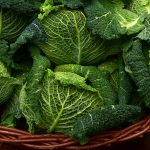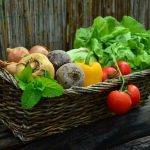Introduction to Organic Food Labels
The Rise of Organic Eating
The last few decades have witnessed a significant surge in organic eating. Consumers are increasingly seeking out organic options, driven by a desire for natural and unprocessed foods. The organic food industry has grown from a niche market into a multi-billion-dollar sector, reflecting a broader shift towards health-conscious living and sustainability. Organic eating is not just a trend but a lifestyle choice for many, as people become more aware of the impact of their dietary choices on their health and the environment.
Understanding Organic Certification
Organic certification is a rigorous process that ensures food products meet strict agricultural standards. These standards prohibit the use of synthetic fertilizers, pesticides, and genetically modified organisms (GMOs) in organic farming. To be labeled as “organic,” a product must be certified by an accredited agency, which involves regular inspections and compliance with organic farming practices. Understanding the nuances of organic certification helps consumers make informed decisions and trust the organic label on their food.
Importance of Reading Food Labels
Food labels are a vital source of information for consumers, offering insights into the nutritional content, ingredients, and production methods of food items. With the plethora of labels on the market, it’s essential to understand what each label signifies. Reading food labels allows consumers to identify truly organic products, differentiate between various health claims, and choose foods that align with their dietary preferences and values.
Goals of the Health-Conscious Shopper
Health-conscious shoppers have clear goals when it comes to purchasing food. They seek products that contribute to their well-being, are produced sustainably, and are free from harmful additives. These consumers often prioritize organic options, as they are associated with better health outcomes and environmental stewardship. By decoding organic food labels, health-conscious shoppers can ensure that their purchases meet their standards for quality and ethical production.
Deciphering Organic Labels
Organic vs. Non-Organic: What’s the Difference?
When it comes to choosing between organic and non-organic products, the key differences lie in farming practices. Organic foods are produced without synthetic pesticides, chemical fertilizers, or genetically modified organisms (GMOs). They also avoid the use of antibiotics or growth hormones in animal products. In contrast, non-organic foods may be grown with the aid of pesticides and fertilizers and can include GMOs. The organic farming process is designed to reduce pollution and conserve water and soil, making it a more environmentally friendly choice.
The Meaning of ‘Certified Organic’
The term ‘Certified Organic’ is a regulated label that signifies a product has met strict production and processing standards set by national organic standards bodies. In the United States, this certification is overseen by the United States Department of Agriculture (USDA). To be labeled as ‘Certified Organic,’ a product must contain at least 95% organic ingredients. The certification process includes rigorous on-site inspections and detailed documentation to ensure compliance with organic practices.
Interpreting the USDA Organic Seal
The USDA Organic Seal is a recognizable symbol that indicates a product is certified organic. When you see this seal, it means that the product contains at least 95% organic ingredients, with the remaining 5% being non-organic ingredients that are approved on the National List of Allowed and Prohibited Substances. Products that are 100% organic will bear a label stating so, while products with at least 70% organic ingredients can use the phrase “Made with Organic Ingredients” but cannot display the USDA Organic Seal.
Other Organic Certifications
Beyond the USDA, there are other organic certifications that consumers may encounter. These include certifications from organizations such as INDOCERT, Jaivik Bharat, and the Indian Organic Certification Agency (ICOCA). Each certification body has its own set of standards and processes for certification. It’s important for consumers to recognize that while these certifications may differ slightly, they all aim to ensure that organic products meet high standards of purity and sustainable production. When shopping for organic products internationally, look for equivalent certifications that are recognized in the country of origin.
In conclusion, understanding organic labels is crucial for making informed decisions about the food you consume. By recognizing the differences between organic and non-organic, interpreting the meaning behind ‘Certified Organic’, and familiarizing yourself with the USDA Organic Seal and other certifications, you can ensure that your choices align with your health and environmental values.
Beyond Organic: Additional Health Labels
Non-GMO Project Verified
When health-conscious shoppers see the Non-GMO Project Verified seal, they can be assured that the product does not contain genetically modified organisms (GMOs). GMOs are organisms whose genetic material has been altered in a way that does not occur naturally. While the long-term health effects of consuming GMOs are still debated, many consumers prefer to avoid them. The Non-GMO Project offers one of the most rigorous testing processes for non-GMO certification, providing an extra layer of assurance for those who wish to avoid genetically altered ingredients.
Fair Trade Certified
Fair Trade Certified products go beyond the organic label by ensuring ethical treatment of workers and sustainable farming practices. This certification indicates that the producers involved in making a product were paid fair wages, worked in safe conditions, and used environmentally friendly practices. Fair Trade certification also supports community development by investing in education, healthcare, and other social initiatives. When you purchase Fair Trade Certified goods, you’re not only making a health-conscious choice but also contributing to the welfare of workers and their communities.
Grass-Fed, Free-Range, and Cage-Free Claims
Labels such as grass-fed, free-range, and cage-free often appeal to those concerned with animal welfare and the quality of their meat, eggs, and dairy products. Grass-fed indicates that the animals were fed a natural diet and often had better living conditions. Free-range suggests that poultry had some access to the outdoors, although the specifics can vary. Cage-free means that birds were not confined to cages but does not guarantee outdoor access. It’s important to note that these labels do not necessarily mean organic, and standards may vary, so it’s wise to research the specific certifications behind these claims.
Gluten-Free and Vegan Labels
For individuals with celiac disease or gluten sensitivity, gluten-free labels are crucial. These products are free from wheat, barley, rye, and other gluten-containing grains. However, gluten-free does not inherently mean healthier, as some products may be high in sugars or fats. Vegan labels indicate that a product contains no animal-derived ingredients, aligning with the dietary restrictions of vegans and those looking to reduce their consumption of animal products. While vegan products can be healthier and more environmentally friendly, it’s still important to check the nutritional content to ensure they meet your dietary needs.
Understanding Ingredients Lists
The Order of Ingredients
When examining a food label, the list of ingredients provides a wealth of information about what’s inside the package. Ingredients are listed in descending order by weight, meaning the first ingredient is the most prevalent in the product, and the last ingredient is the least. This order is particularly important for health-conscious shoppers who want to understand the primary components of their food. For instance, if sugar or a sugar derivative is listed as one of the first few ingredients, the product is likely to be high in added sugars.
Hidden Non-Organic Ingredients
Even products labeled as organic can contain non-organic ingredients. This is especially true for items that are not 100% organic but are instead labeled as “made with organic ingredients.” In these cases, at least 70% of the ingredients must be organic, but the remaining 30% may not be. It’s crucial to scrutinize the ingredients list for non-organic items, which may not adhere to the same standards for pesticide and herbicide use. Look for specific organic designations next to each ingredient to ensure they meet your organic criteria.
Additives and Preservatives to Avoid
Many food products contain additives and preservatives to extend shelf life, enhance flavor, or improve texture. However, some of these can be harmful to health. Health-conscious consumers should be wary of ingredients like high-fructose corn syrup, monosodium glutamate (MSG), artificial sweeteners (such as aspartame and saccharin), and preservatives like sodium benzoate and butylated hydroxyanisole (BHA). These substances can have adverse effects on health, and organic products should ideally be free from such additives.
Natural vs. Artificial Flavors and Colors
The terms “natural” and “artificial” on food labels can be confusing. Natural flavors are derived from plant or animal sources, whereas artificial flavors are chemically created. Similarly, natural colors come from natural sources, and artificial colors are synthetic. While natural flavors and colors are generally preferred by health-conscious individuals, it’s important to note that “natural” does not necessarily mean healthier or safer. Always check for specific information on the source of flavors and colors to make an informed decision.
Understanding the ingredients list on food labels is a critical skill for anyone looking to maintain a healthy and organic diet. By paying attention to the order of ingredients, identifying hidden non-organic components, avoiding harmful additives and preservatives, and discerning between natural and artificial flavors and colors, shoppers can make choices that align with their health and wellness goals.
CHECK OUT: Purium’s 10 Day Cleanser Pack
The Impact of Packaging on Product Purity
BPA and Other Chemicals in Packaging
The integrity of organic food can be compromised by the presence of chemicals in packaging materials. Bisphenol A (BPA), a chemical commonly found in the lining of cans and plastic containers, is known to leach into food and beverages. Studies have linked BPA exposure to various health issues, including hormonal disruptions and increased risk of certain cancers. Organic consumers are particularly concerned about such contaminants, as they negate the very essence of choosing organic for its purity and health benefits. To address these concerns, manufacturers are increasingly turning to BPA-free packaging options, though vigilance is required as replacements may also carry health risks. It is crucial for health-conscious shoppers to be aware of the potential for chemical leaching and to seek out products with safer packaging alternatives.
Eco-Friendly Packaging and Sustainability
Organic shoppers often prioritize environmental sustainability, and packaging plays a significant role in this regard. Eco-friendly packaging solutions, such as biodegradable materials or recyclable containers, align with the ethos of organic consumption. These sustainable options not only reduce the ecological footprint but also resonate with the goals of organic certification, which include promoting ecological balance and conserving biodiversity. Consumers should look for products with minimal packaging or those using materials that have a lower environmental impact, such as glass or recycled paper, to ensure that their organic choices are consistent with broader sustainability practices.
How Packaging Affects Shelf Life and Freshness
The packaging is not only about protecting the product from contamination but also about preserving its freshness and extending shelf life. Organic foods, free from preservatives, rely heavily on the quality of packaging to maintain their integrity. Innovations in packaging technology, such as modified atmosphere packaging (MAP), can help in preserving the freshness of organic produce by slowing down the oxidation process. Health-conscious consumers should be mindful of the packaging’s role in product longevity and seek out organic items that utilize packaging designed to optimize shelf life without compromising the product’s organic nature.
In conclusion, the packaging is a critical factor in maintaining the purity and quality of organic products. Consumers should be informed about the potential risks of chemical leaching, the environmental impact of packaging materials, and the technologies used to preserve freshness. By choosing organic products with safe, sustainable, and effective packaging, health-conscious shoppers can better support their well-being and the health of the planet.
Shopping Strategies for the Health-Conscious
Where to Find Trustworthy Organic Products
For the health-conscious shopper, finding trustworthy organic products is paramount. Begin by frequenting local farmers’ markets, where you can often speak directly with growers about their farming practices. Health food stores and co-ops are also reliable sources, as they typically curate their selections with care. When shopping at larger supermarkets, look for products bearing reputable certifications such as the USDA Organic Seal, Australian Certified Organic (ACO), or Non-GMO Project Verified. These labels indicate compliance with strict organic standards.
Seasonal and Local Organic Shopping
Shopping for seasonal and local organic produce not only supports regional agriculture but also ensures fresher, more nutrient-dense foods. Seasonal produce is often more affordable and environmentally friendly due to reduced transportation emissions. Check for community-supported agriculture (CSA) programs in your area, which offer subscriptions for regular deliveries of local organic produce.
Budgeting for Organic Foods
Organic foods can be more expensive, but with smart budgeting, they can fit into your grocery plan. Prioritize organic purchases by focusing on items known to have higher pesticide residues when conventionally grown, often referred to as the “Dirty Dozen.” Buying in bulk, choosing store brands, and planning meals around sales and seasonal availability can also help manage costs. Remember, investing in organic food is an investment in your health.
Avoiding Common Marketing Traps
Beware of the “Health Halo Effect” where products are marketed with buzzwords like “natural,” “artisan,” or “farm-fresh” that imply health benefits without substantiation. Always read the ingredients list and nutrition facts to assess the true health value of a product. Be cautious of front-of-package claims and instead focus on the actual nutritional content. Remember, terms like “natural” are not regulated and do not equate to organic or healthy.
In conclusion, by knowing where to shop, choosing seasonal and local options, budgeting wisely, and being savvy about marketing tactics, health-conscious consumers can make informed decisions that align with their organic and healthy eating goals.
Conclusion: Empowering Your Organic Lifestyle
Summary of Key Takeaways
Throughout this guide, we’ve explored the intricacies of organic food labels, helping you to become a more informed and health-conscious shopper. We’ve learned that “Certified Organic” is not just a buzzword but a guarantee of adherence to strict agricultural practices. We’ve deciphered the USDA Organic Seal and other certifications, ensuring you can trust the organic status of your purchases. We’ve also looked beyond organic labels to understand other health claims such as Non-GMO Project Verified and Fair Trade Certified. The importance of scrutinizing ingredient lists was emphasized, highlighting the need to be vigilant about hidden non-organic components, additives, and artificial flavors. Additionally, we’ve considered the impact of packaging on product purity and the environment. Finally, we’ve armed you with strategies for finding trustworthy organic products, shopping seasonally and locally, and budgeting effectively without falling prey to common marketing traps.
Continuing Education on Organic Products
To maintain a truly organic lifestyle, continuous learning is essential. Stay updated with the latest research and changes in organic certification standards, as these can evolve. Engage with online communities of health-conscious individuals, and consider subscribing to newsletters from reputable organic advocacy groups. Attending local workshops or farmers’ markets can also provide valuable insights directly from organic producers. Remember, knowledge is power, and the more you know, the better choices you can make.
Making Informed Choices for Long-Term Health
Ultimately, the goal of understanding organic food labels is to make informed choices that contribute to long-term health and well-being. By prioritizing organic and health-conscious products, you’re not only nurturing your body but also supporting sustainable farming practices that benefit the planet. It’s about making choices that align with your values and health goals. As you continue on your journey, let your newfound knowledge guide you to a lifestyle that is not only healthier for you but also for the world around you. Embrace the organic lifestyle with confidence, knowing that each mindful purchase is a step towards a healthier future.
READ MORE: Organic Foods: What You Need To Know









